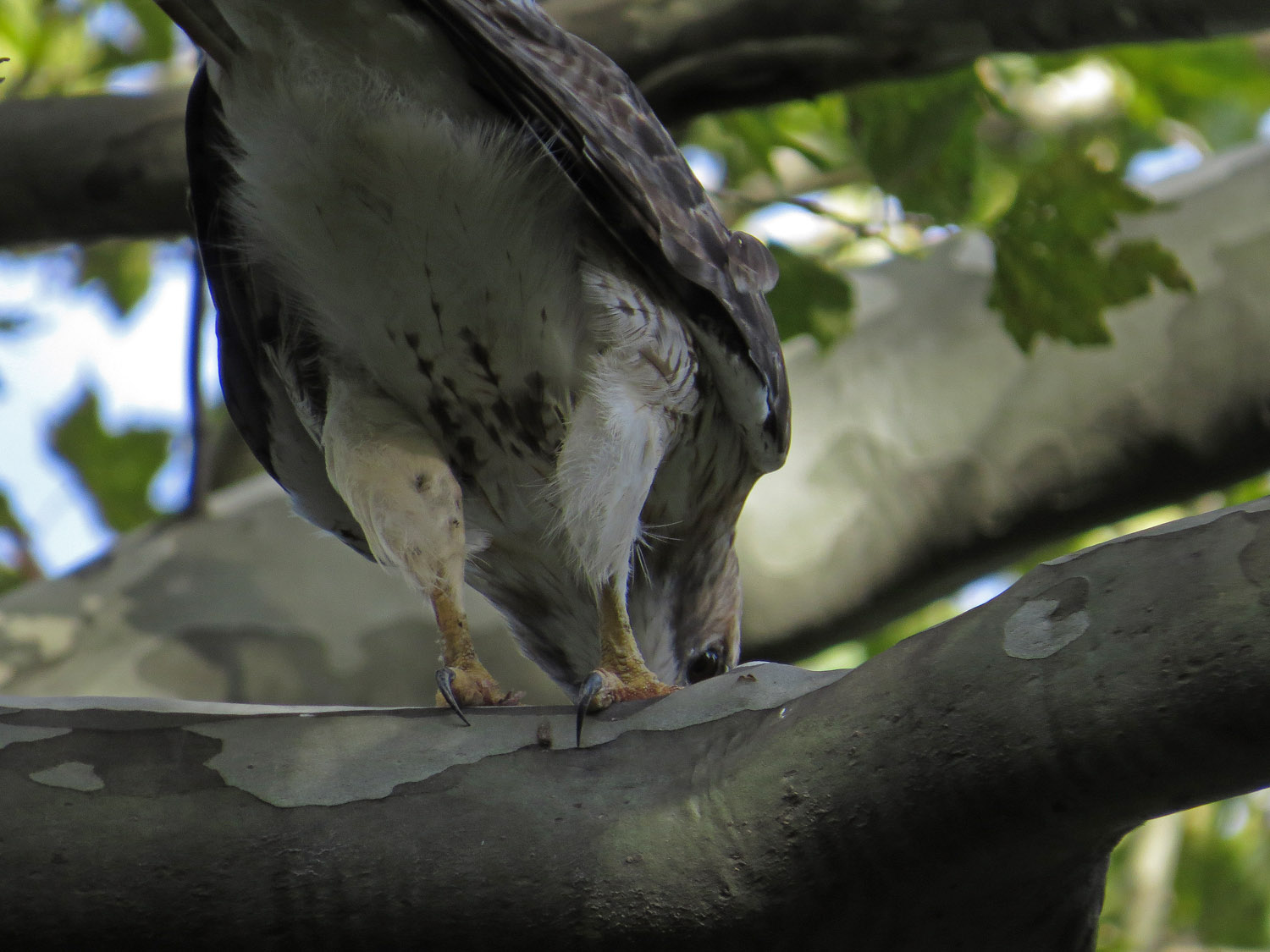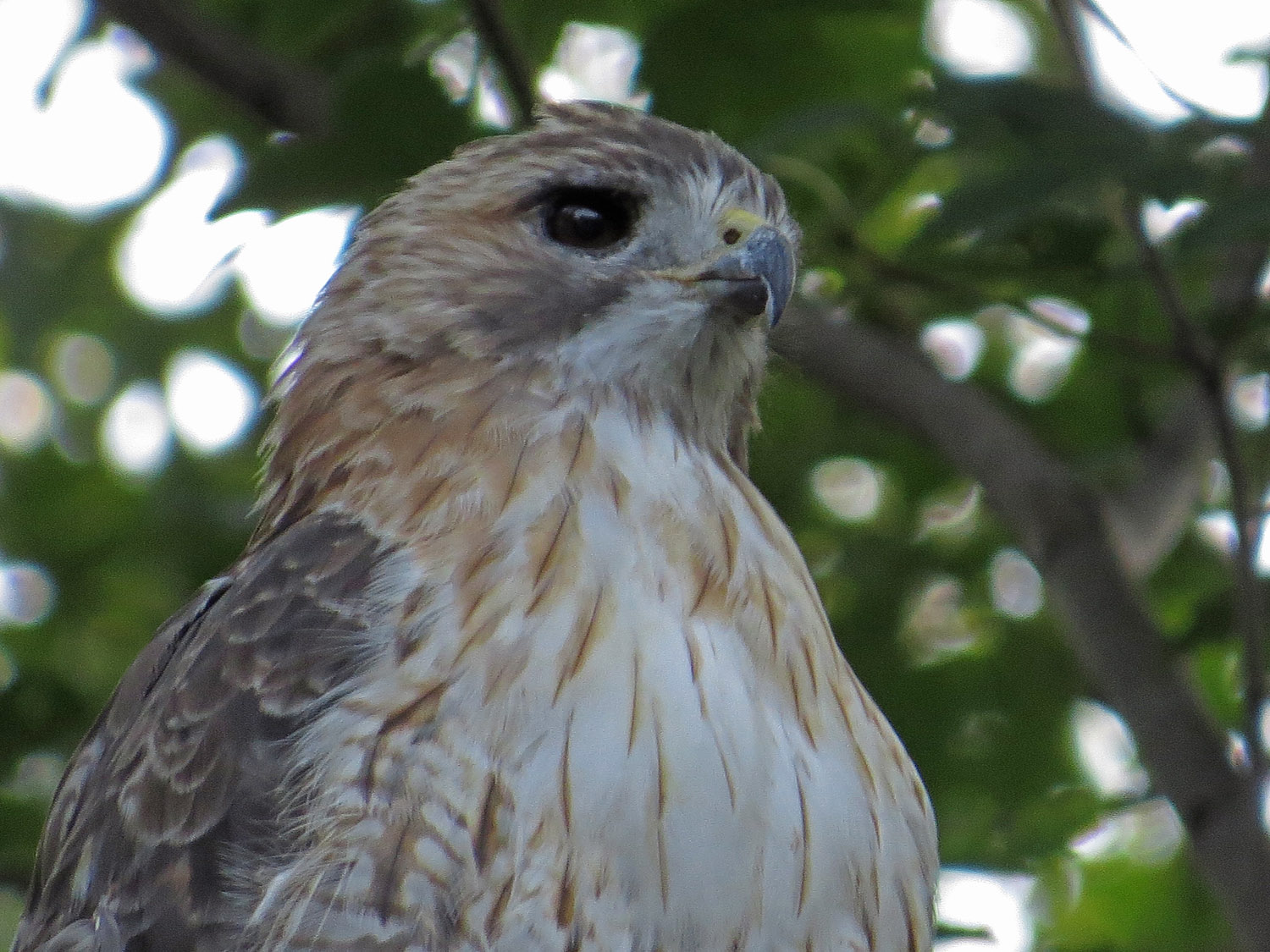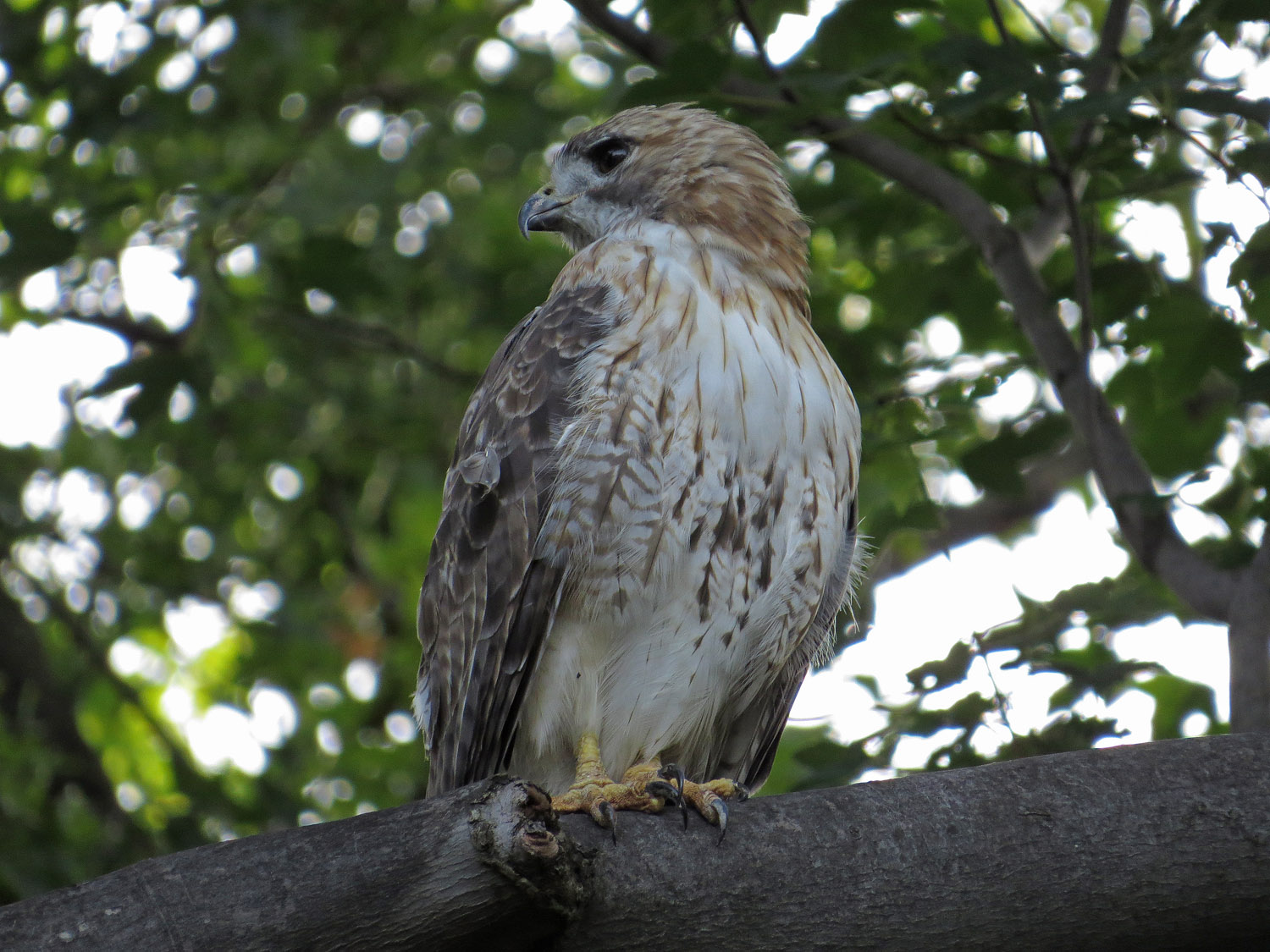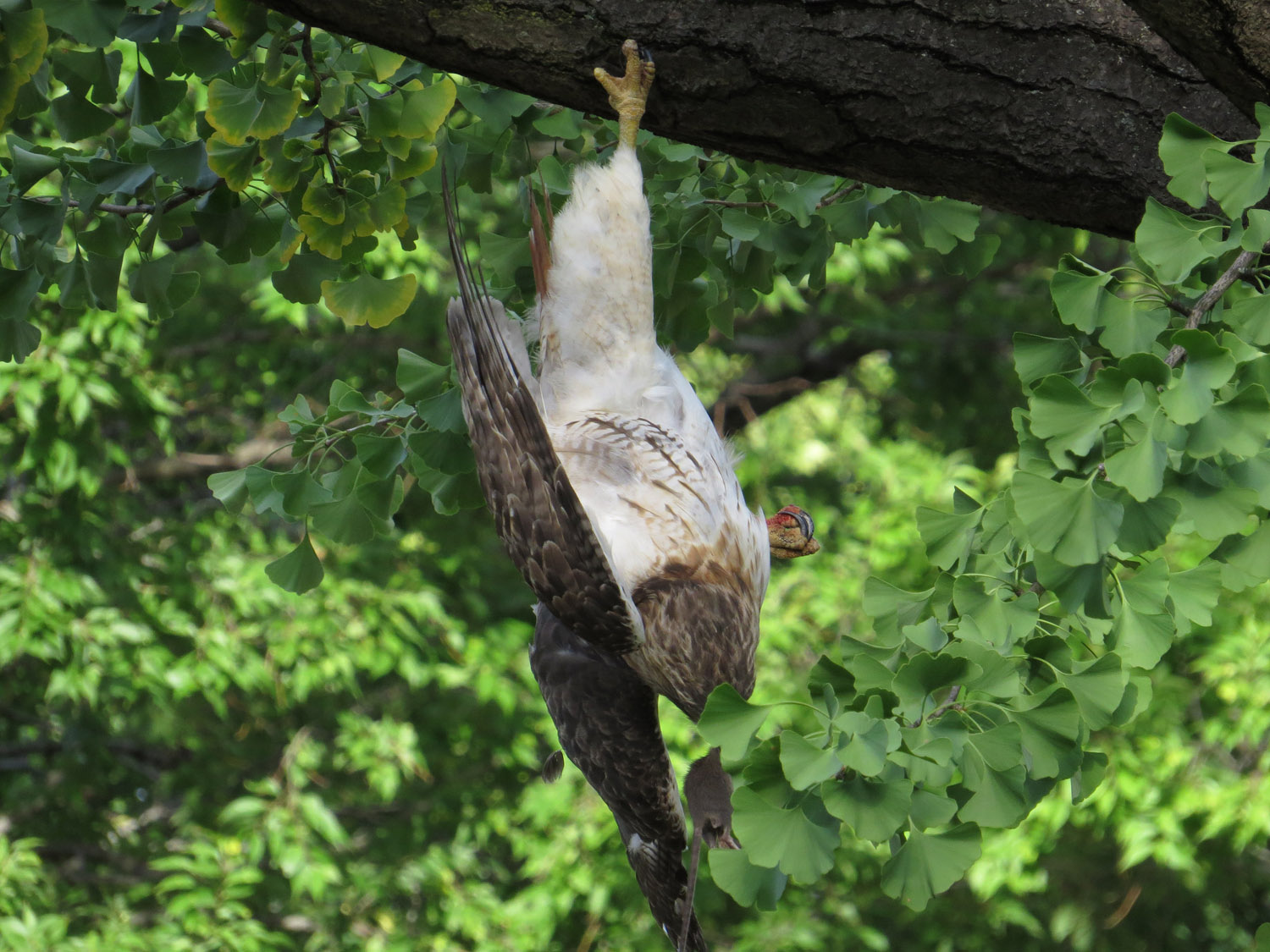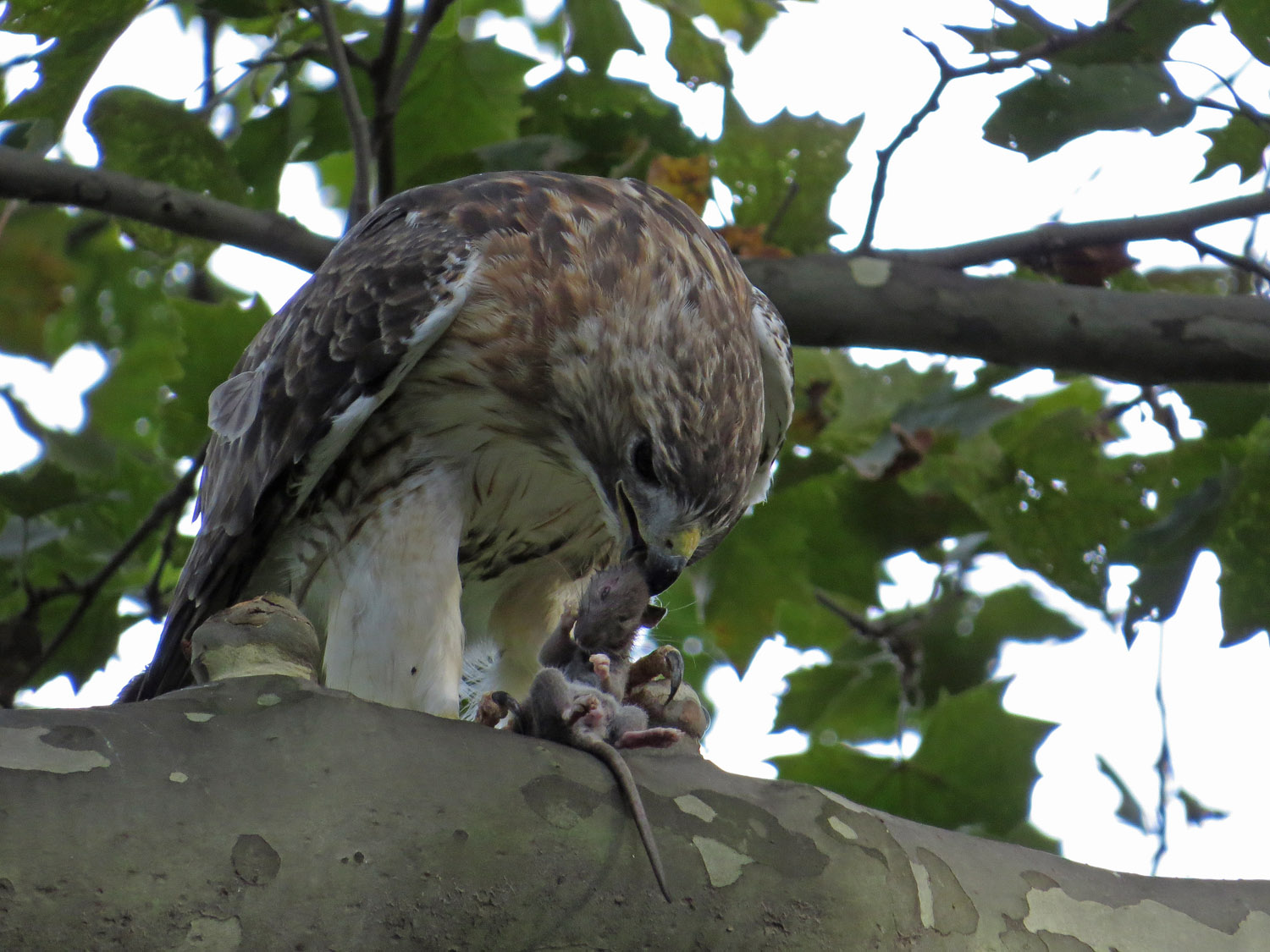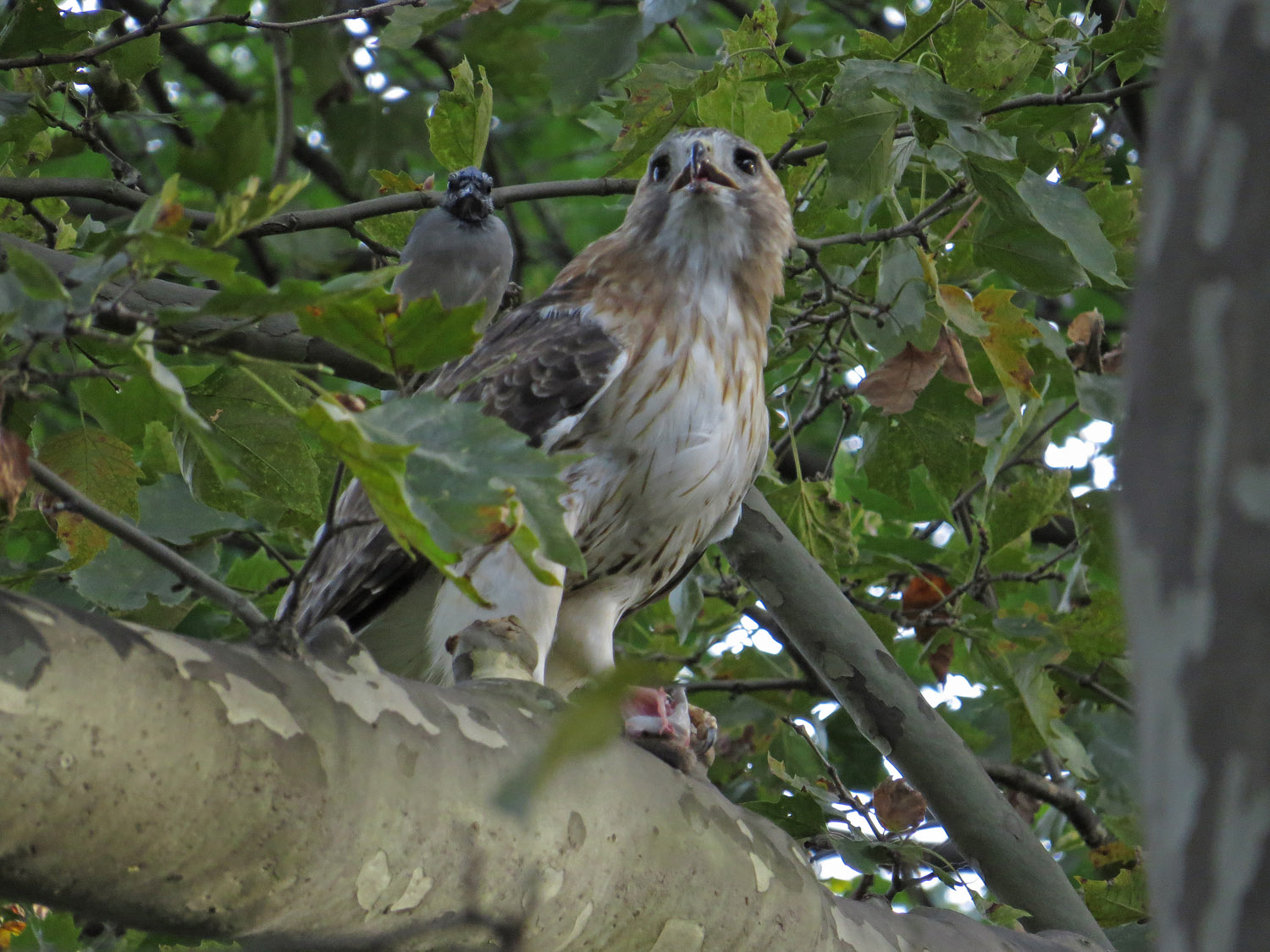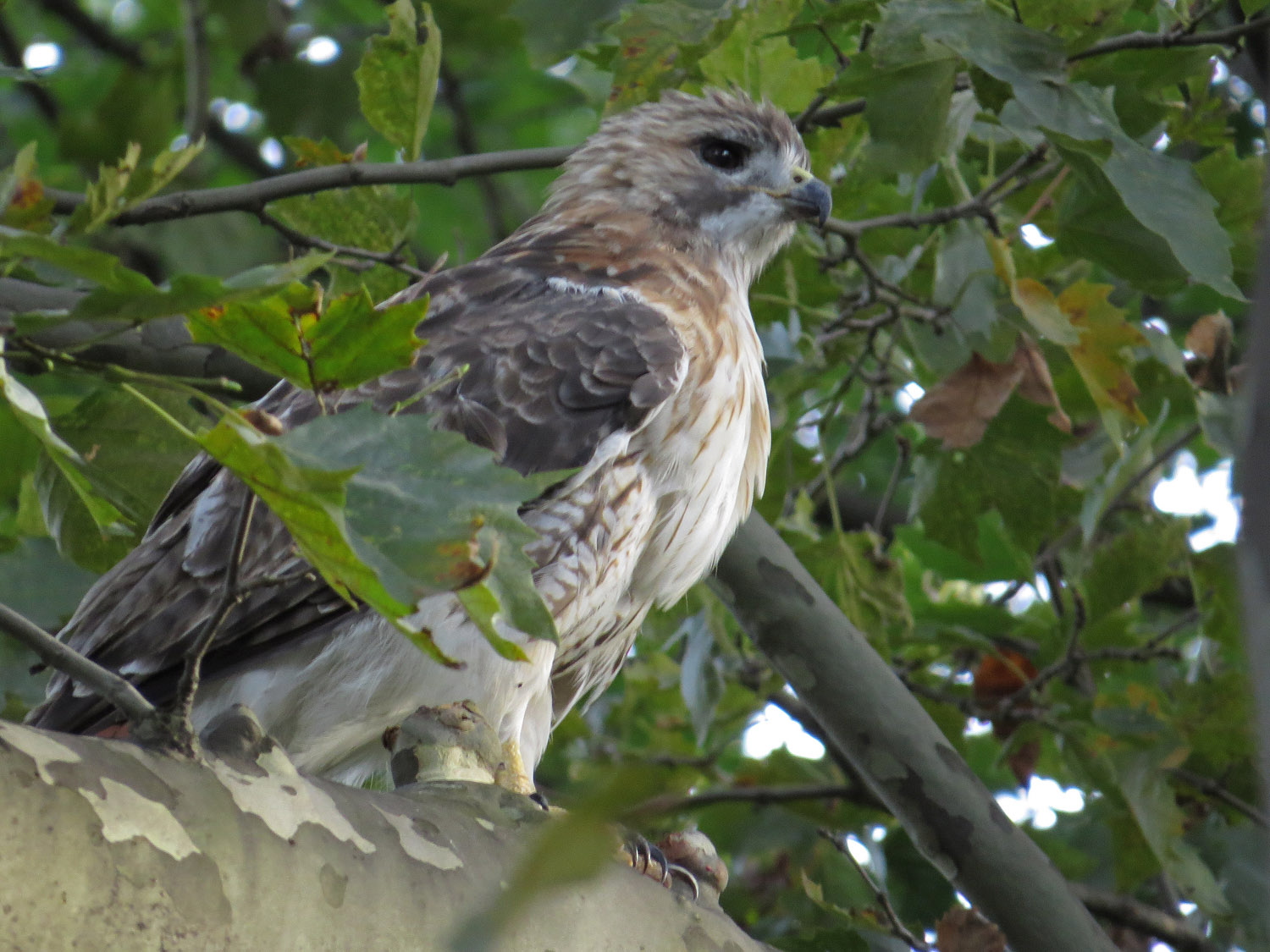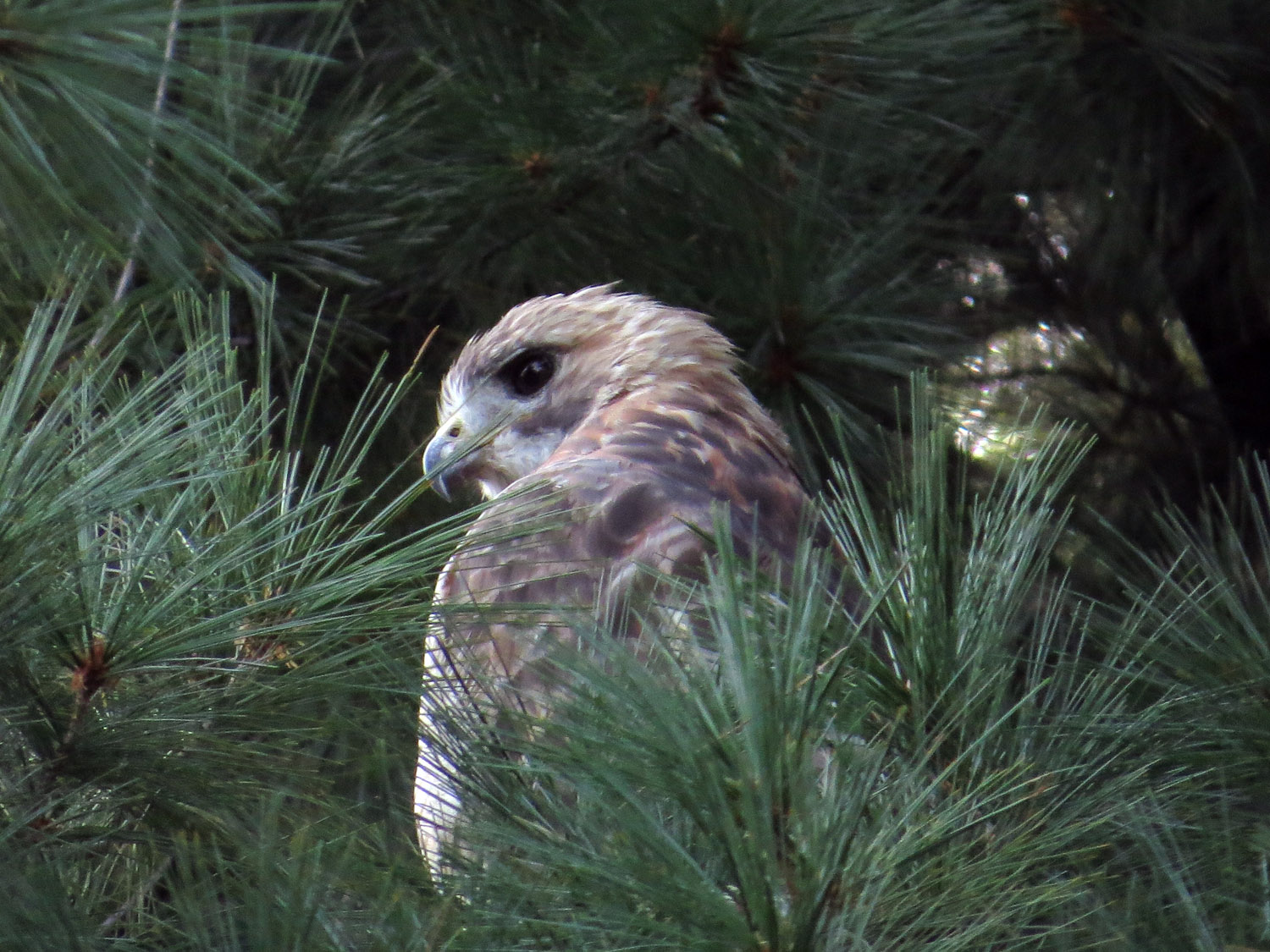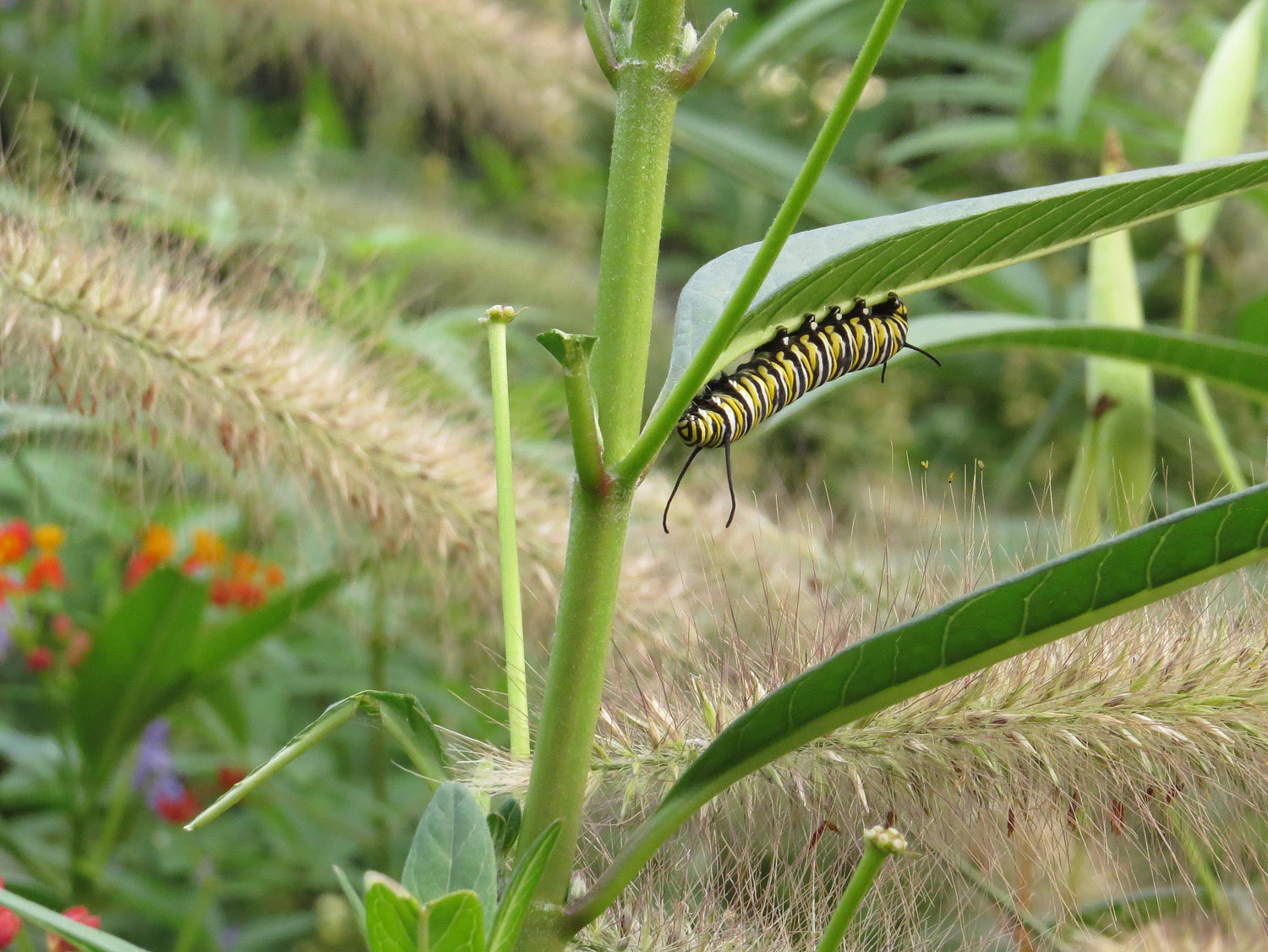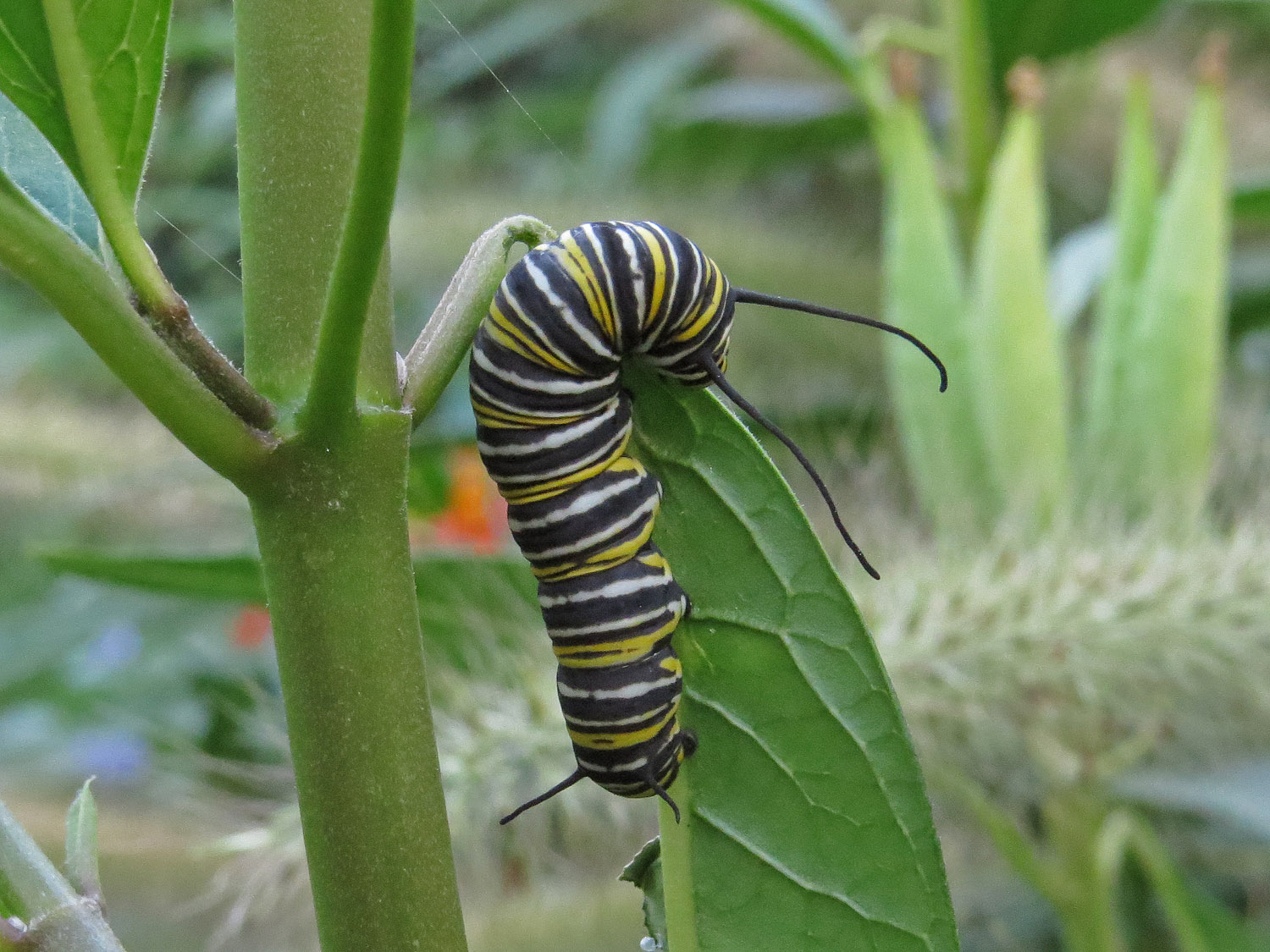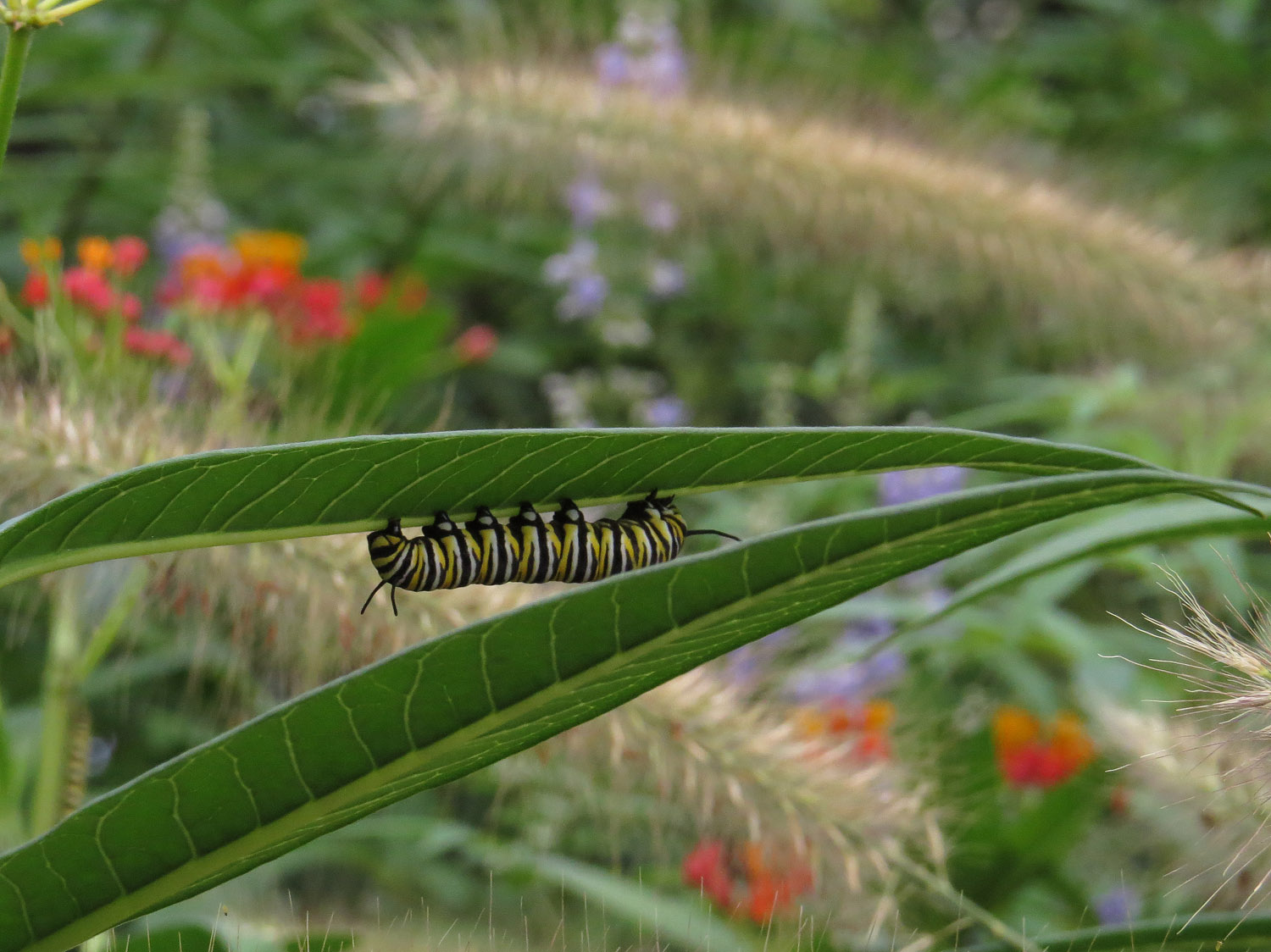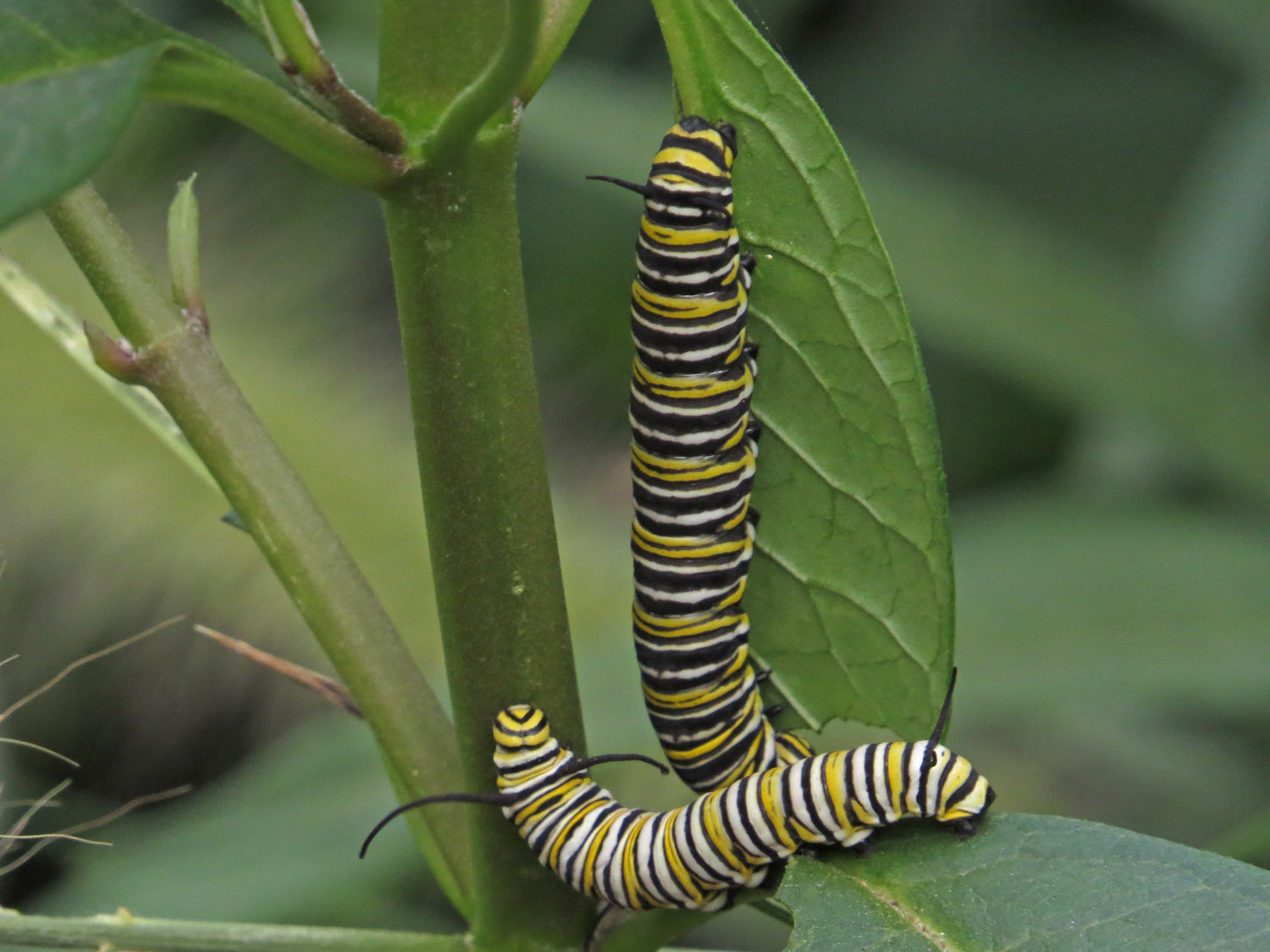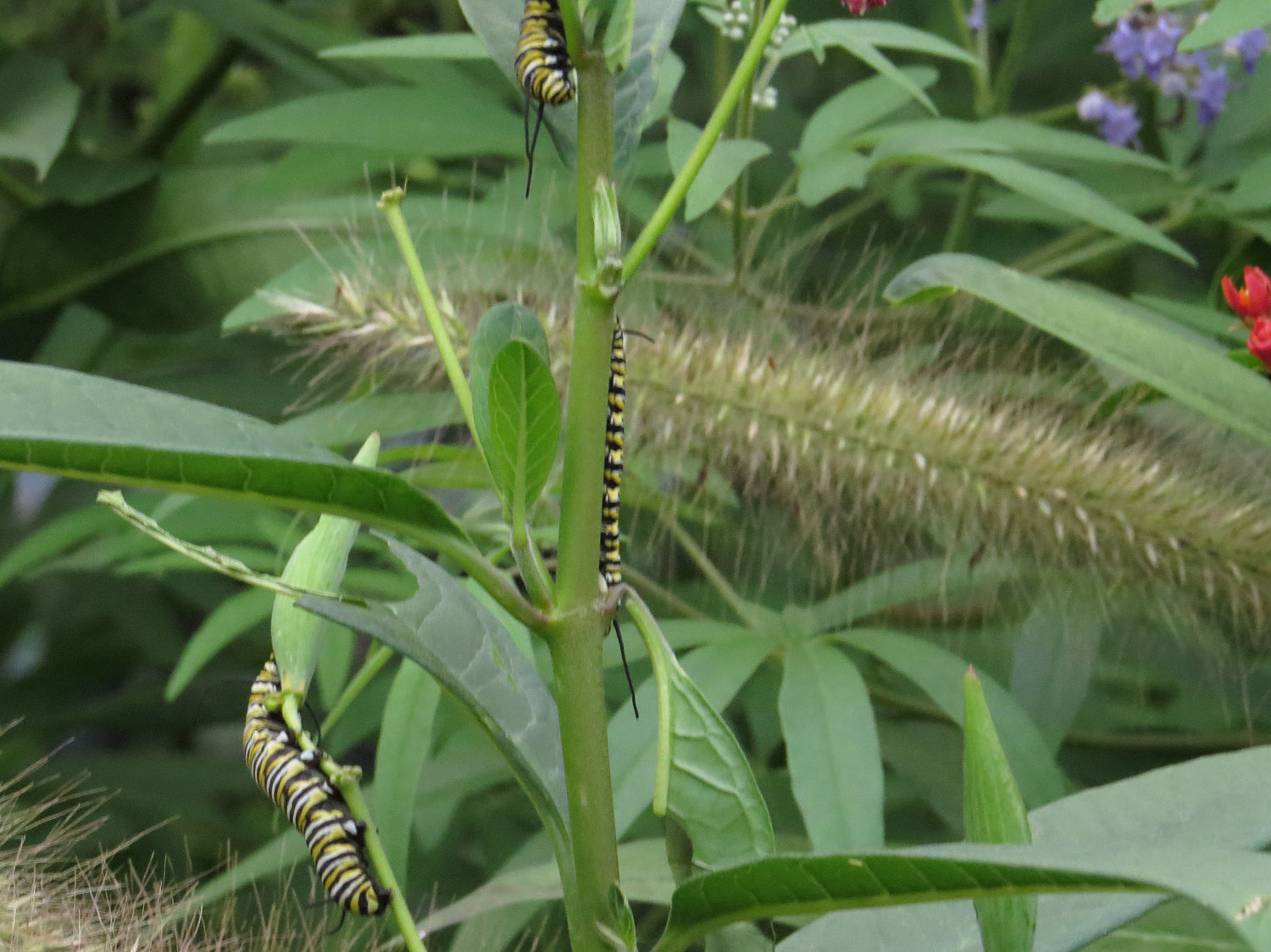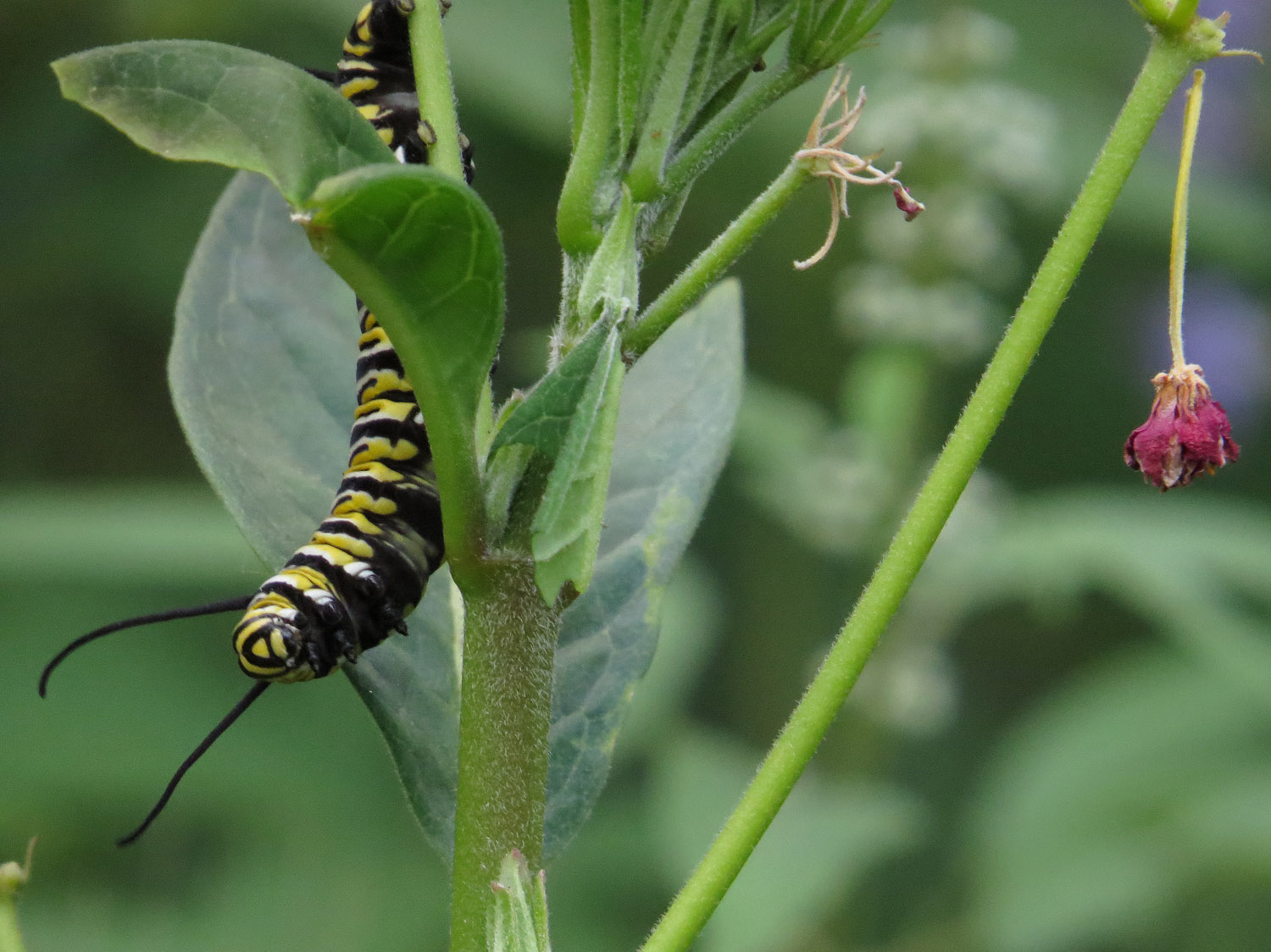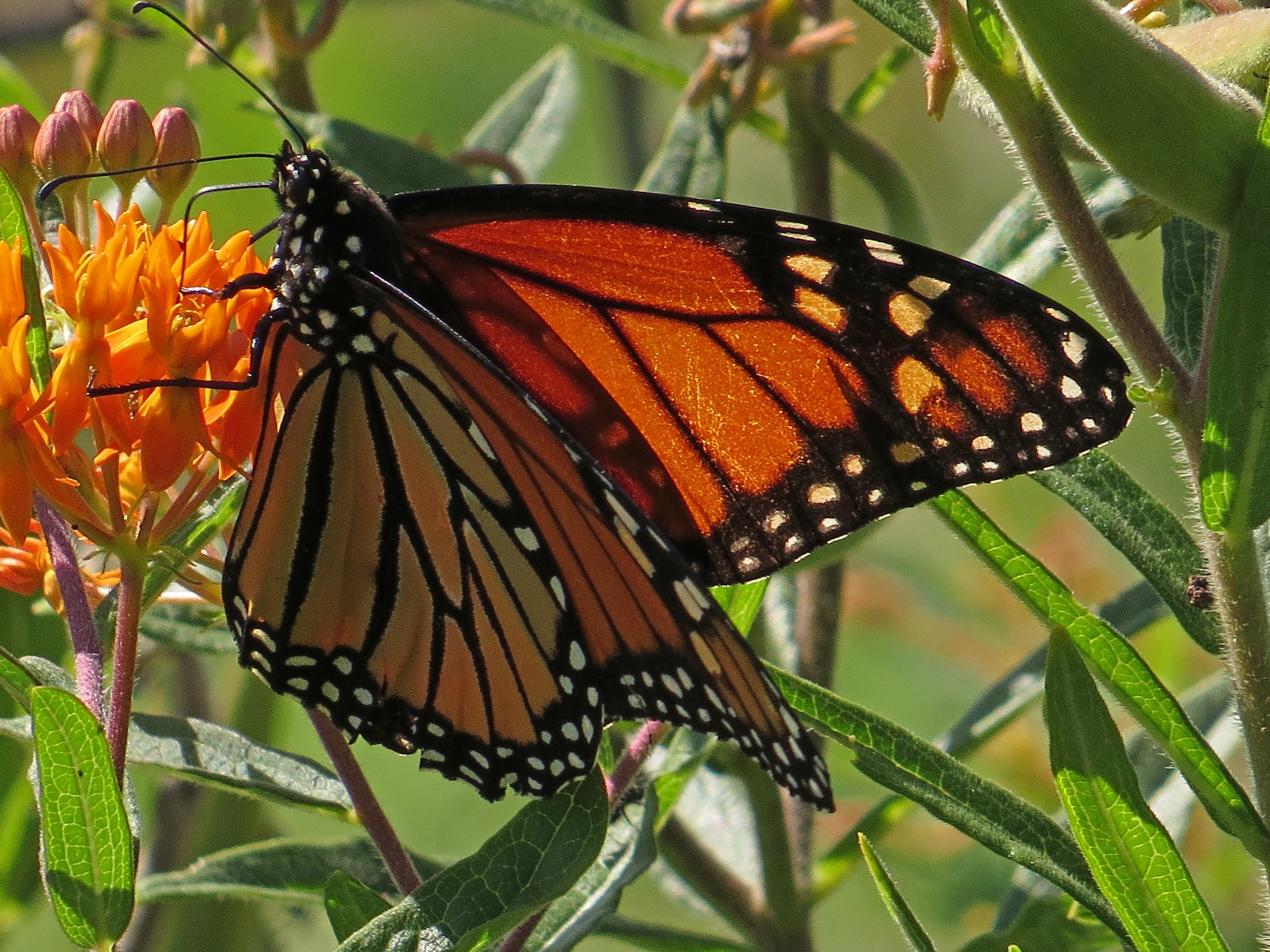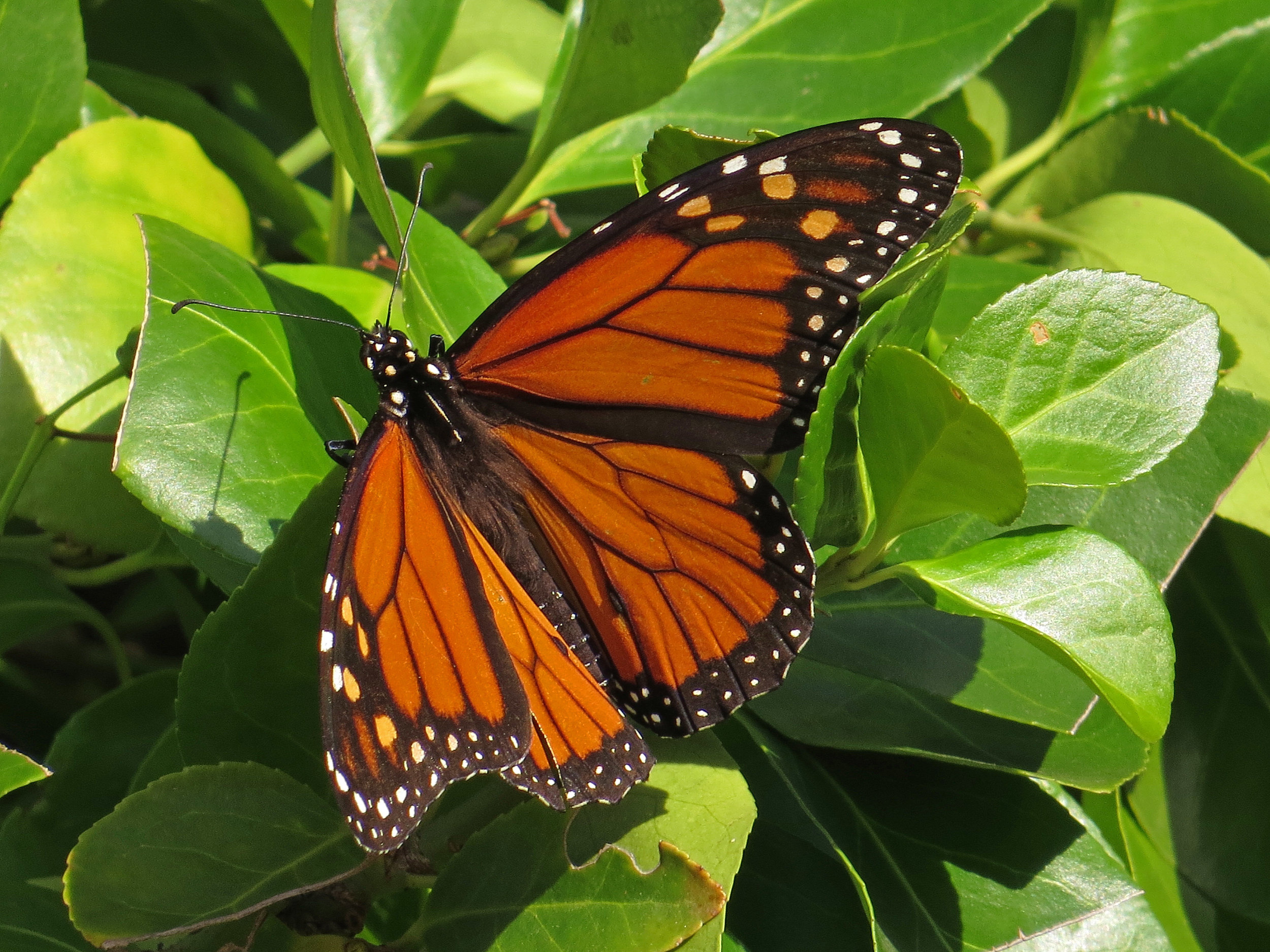September 3, the evening after Pale Male hung batlike from a tree, he posed for pictures near the restrooms at Maintenance Meadow, then swooped down, caught a rat, and ate the rat on the ground. Did he mantle the rat because he remembered what happened when he flew too soon to a tree the night before, or did he mantle it because Octavia was nearby and he was not going to give her any until he was good and ready? At any rate, when he finished half the rat, he did give the remainder to Octavia on Cedar Hill, and she ate a lot of it before flying off.
Pale Male in the Ramble, September 3, 2016
On September 4, I saw Pale Male after he had raided a squirrels' nest and ate a baby squirrel. I was able to photograph him in the Ramble and on Cedar Hill. On September 5 after the Yankees game and before my singing workshop, I lucked into Fred Hawk over the bridle path south of the Reservoir, north of the west Pinetum. I hadn't seen him this close for quite a while, and it was nice to just watch him for a while.
Fred Hawk, over the bridle path south of the Reservoir, September 5, 2016
There is some rat eating in the first video. Just posing in the second.
Pale Male and Octavia, on September 3. The last two photos are Octavia.
Pale on September 4, and a grieving squirrel.
Fred Hawk, over the bridle path south of the Reservoir. He flew here after a brief stop in the Pinetum across the transverse.





















